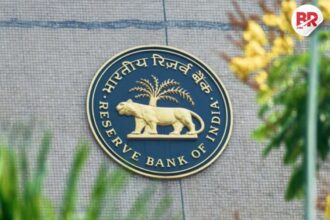
The Indian government has announced that it will borrow ₹8 lakh crore in the first half of the financial year 2025-26. This amount is lower than the ₹8.4 lakh crore estimated by Bloomberg but higher than the ₹7.4 lakh crore borrowed in the same period last year.
In total, the government plans to borrow ₹14.82 lakh crore for the entire year. More than half of this—54%—will be raised in the first six months through the sale of government bonds. This includes ₹10,000 crore in Sovereign Green Bonds, which are used to fund environmentally friendly projects.

Why is This Borrowing Important?
The government borrows money to cover expenses like infrastructure projects and social programs. A lower borrowing amount can be a good sign because it may reduce pressure on interest rates and allow businesses to borrow more easily. It also shows that the government is managing its finances carefully.
Also Read: Trump’s 25% Car Tariff Shocks India: Can Tata & Eicher Survive?
How Will the Government Borrow?
The borrowing will take place through 26 weekly auctions of government bonds, with different maturity periods:
3-year bonds: 5.3% of total borrowing, 5-year bonds: 11.3%, 7-year bonds: 8.2%, 10-year bonds: 26.2%, 15-year bonds: 14%, 30-year bonds: 10.5%, 40-year bonds: 14%, 50-year bonds: 10.5%
The government will also buy back and switch bonds to manage its debt repayment in a smoother way.
Additional Borrowing Plans
-
The government will issue Treasury Bills (T-bills) worth ₹19,000 crore every week in the first quarter.
-
₹9,000 crore from 91-day T-bills
-
₹5,000 crore from 182-day T-bills
-
₹5,000 crore from 364-day T-bills
-
-
A special “greenshoe” option will allow the government to raise an extra ₹2,000 crore in each auction if needed.
Also See: US Economy Slows Down as GDP Growth Drops to 2.4%
-
The Reserve Bank of India (RBI) has set a Ways and Means Advances (WMA) limit of ₹1.5 lakh crore to help the government manage temporary cash shortages.
This borrowing plan helps the government maintain financial stability while ensuring there is enough money to fund key projects.













